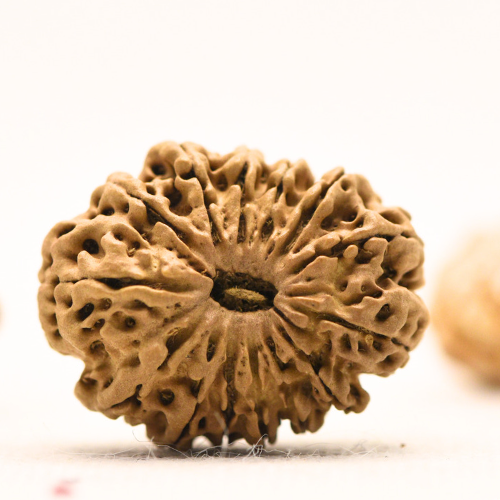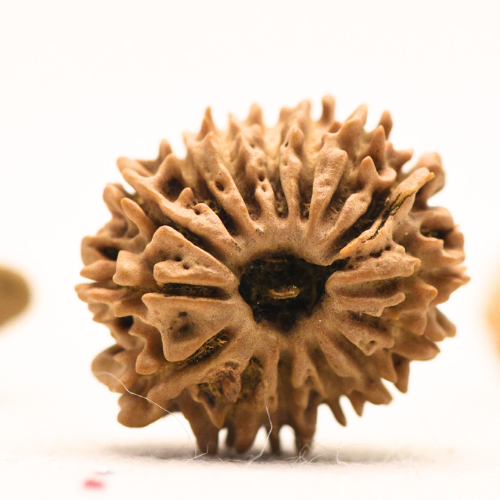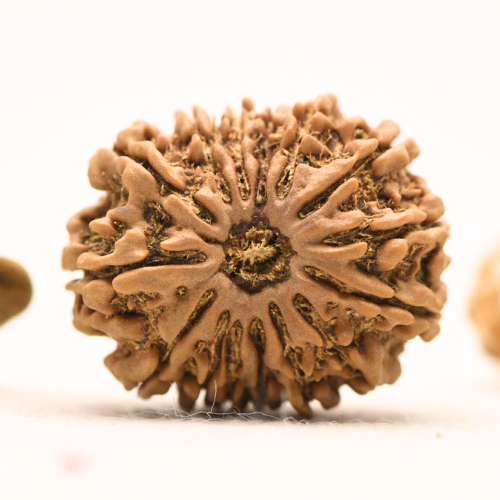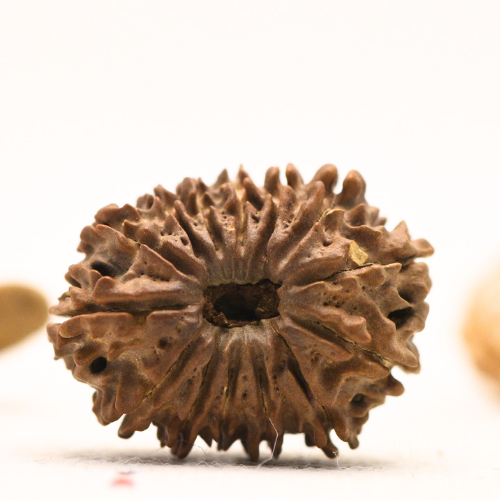Vivah Panchami
Vivah Panchami is a significant cultural and spiritual festival for Adiyogi Rudraksha And Gemstones because it matches with the company's ideals, which are based on traditional Indian techniques and Vedic astrology.
Adiyogi Rudraksha And Gemstones has been on a holy mission since 2003, anchored in dedication and spirituality, to give generations with the greatest Rudraksha malas and authentic navratnas.
On this day, Vivah Panchami, people commemorate Bhagavan Rama and Sita's wedding, which is believed to have taken place. It is especially significant at Ayodhya, Bhagavan Rama's birthplace, where historic temples are decorated with flowers and lights. According to traditional writings, this is a sacred day, and partaking in the celebration will provide married life balance, harmony, and happiness, as well as overall prosperity and tranquillity.
When Is 2024 Vivah Panchami Celebrated?
The marriage of Bhagavan Rama and Goddess Sita in the Treta Yug is commemorated on Vivah Panchami. It occurs during Shukla Paksha, the fifth day of the Hindu month of Margashirsha. Some parts of Nepal and India celebrate the holiday.
Vivah Panchami, December 6, 2024. Panchami Tithi begins at 12:49 PM on December 5, 2024 and finishes on December 6, 2024, at 12:07 PM.
Meaning of Panchami Vivah.
Goddess Sita and Bhagavan Ram married Vivah Panchami according to the ancient Indian Swayamvar ceremony. "Swayam" is the term for oneself, and "var" means groom. Women choose their spouses during the Swamayvar ritual from a pool of suitors who have come to the venue to demonstrate their abilities in order to win over the bride.
King Janak organized a Swayamvar for his daughter, Goddess Sita. He had stipulated that the princess witness Bhagavan Shiva's Pinaka bow hoisted by her ideal groom. Bhagavan Ram shattered the bow twice. He continued to serve as Goddess Sita's perfect husband.
As a result, Vivah Panchami is particularly important to Hindus and Muslims because it represents the union of two highly respected gods, the perfect couple, and it also serves as a reminder of the values of love, dedication, and righteousness in marriage.
The Story of Sita Swayamvar
Goddess Sita once raised the Shiv Dhanush with ease while playing with her sisters, a feat no one else in the palace could duplicate. According to mythology, Bhagavan Shiva used a strong bow to disrupt the Daksha Yagya ritual. Bhagavan Shiva threatened to wipe off the demigods with his bow after being denied his rightful part. The gods were content with Bhagavan Shiva. Devavrat, an ancestor of King Janak, eventually obtained the bow.
King Janak, impressed by Goddess Sita's ease in lifting the Shiv Dhanush, declared it a requirement for her Swayamvar. The suitor who could hoist and string the bow during the Swayamvar would have the opportunity to marry Goddess Sita. While Goddess Sita was having her Swayamvar, Bhagavan Ram, his brother Laxman, and the guru Vashishtha traveled to Mithila. Bhagavan Ram wants to explore King Janak's Shiv Dhanush. After learning about the circumstances, King Janak graciously invited Bhagavan Ram, Lakshman, and the sage Vashishtha to visit his royal court. He said he'd marry his daughter to Bhagavan Ram provided the prince of Ayodhya could pull the bow. Even powerful beings such as demigods, Asuras, Rakshasas, Yakshas, Gandharvas, and Nagas were unable to string the divine bow, therefore he questioned Bhagavan Ram's power. Bhagavan Ram effortlessly hoisted, strung, and bent the bow, dispelling King Janak's doubts. A thunderous crash indicated a break in the bow. The Swayamvar audience were impressed and envious of Bhagavan Ram. They sent messengers to Ayodhya to spread word of Bhagavan Ram's astounding accomplishment. King Dashrath was invited to Bhagavan Ram and Sita's wedding ceremony. Urmila married Laxman, Bhagavan Ram's younger brother, as arranged by King Janak and King Dashrath. Mandavi and Shrutakirti, the daughters of King Janak's younger brother Kushadhwaj, were also suggested by the sages Vishwamitra and Vashishtha to marry Bharat and Shatrughan. Weddings were majestic affairs.
During the jubilant celebrations in Mithila, an irate sage Parshurama entered King Janak's royal court and confronted Bhagavan Ram. Parshurama stated that Shiva and Vishnu received the two bows crafted by the heavenly Vishwakarma. He challenged Bhagavan Ram to draw the bow that Bhagavan Vishnu possessed. In a gracious acceptance of the challenge, Bhagavan Ram successfully strung Parshurama's bow. Parshurama recognized Bhagavan Ram as the heavenly manifestation of Bhagavan Vishnu. He departed the palace, having accepted defeat. Goddess Sita's celestial Swayamvar came to an end with her sacred marriage to Bhagavan Ram.
Vivah Panchami Puja Vidhi enthusiasts rise early and take a sacred bath.
Swish Gangajal water over the idols of Bhagavan Rama and Goddess Sita after bathing and meditating on Vivah Panchami. Adorn them with flowers and yellow attire, and then serve bhog. Finally, place oil lights around them to illuminate the area. Proceedings:
Bhagavan Ram's idol, like Goddess Sita's, is dressed in gorgeous clothing, jewelry, and flower garlands.
Prepared and wrapped in a fresh yellow or red fabric known as a chowki.
Before beginning the marriage ceremony between Bhagavan Ram and Goddess Sita, akshat, durva grass, fruits, flowers, and dhoop are offered to Bhagavan Ganesha in order to seek his blessing.
Bhagavan Ram and Goddess Sita are presented with haldi and kumkum, followed by a crimson chunri, a fresh piece of cloth, and shringar samagri items such as alta, bindi, sindoor, bangles, kajal, mehendi, sindoor, and other jewelry.
A mauli, or holy thread, has been attached to the Bhagavan.
Ghee diya, rose flowers, fresh fruits, sweets, and bhog are some of the offerings made to Bhagavan Ram and Goddess Sita.
Chant Ram Stuti and Aarti, then design the Ramcharitmanas Paath.
Chanting OM Janaki Vallabhaya Namah follows, as two strips of cloth—one attached to the goddess's clothing and the other to Bhagavan Ram's—are connected for the Gath Bandhan.
Reading Bala Kandam Paath is a vital part of the idols' wedding celebrations.
Perfume, flowers, lamps, incense, and Dhoop are all used as offerings to the gods.
Tamaboolam prepared from paan, supari, banana, fruits, dakshina, haldi, kumkum, and a brown coconut with the husk cut into two equal pieces is also added.
The Baal-Kand Katha, also known as Vivah Prasang, concludes with the Aarti.
This is the day for a variety of ceremonies and pujas, including the recounting of the Bhagavan Ram story, the reading of the Ramayana, and Kalyanam, which honors Goddess Sita and Bhagavan Ram's marriage.
Devotees visit Bhagavan Rama temples and sing songs from the Ramayana or Vishnu Sahasranama while offering flowers, incense, and sweets.
Vivah Panchami Mantra
श्री रामचन्द्राय नमः । राम रामेति रामेति रमे रामे मनोरमे । सहस्त्र नाम तत्तुन्यं राम नाम वरानने ।। गायत्री मंत्र- ॐ दाशरथये विद्महे जानकी वल्लभाय धी महि।
Aspects of Vivah Panchami Puja.
When Vivah Panchami is celebrated with a pooja, marital issues become less severe.
Performing worship of Goddess Sita and Bhagavan Ram on this day helps to remove all difficulties from a marriage. Happy families recite the Ramcharitmanas.
Whereas married folks draw blessings for a happy marriage, single girls attract desired mates.
Happy Panchami festival!
Known by its full name, the "Ram Vivah Utsav," this social event is quite popular. People who follow the ritual often gather with friends and relatives in their homes or in adjacent towns. Participating in and witnessing this ceremony improves marital harmony and happiness, promoting affluence and peace. Vivah Panchami helps persons with marriage troubles find the right life mate by restoring balance and removing obstacles.
Ayodhya and Janakpur in Nepal celebrate Vivah Panchami with great grandeur. In Uttar Pradesh, Bihar, and Madhya Pradesh, chariots and idols of Bhagavan Rama and Goddess Sita march.
Because of the fourteen years of exile, there is a superstition among people today that a married life on Vivah Panchami will be as wretched as Goddess Sita's, hence marriages are avoided on this day. In Nepal and Mithilanchal, this is strictly followed. It has been customary for years to avoid planning marriages on this day. Rather, this is considered as a day to address current marital issues that are causing difficulty.
While unmarried women celebrate Vivah Panchami to find suitable life partners, married women celebrate it to maintain marital happiness. Devotees of Bhagavan Rama and Mata Sita celebrate Ram Vivah Panchami by planning their upcoming wedding, fasting during the day, and doing a special puja.





